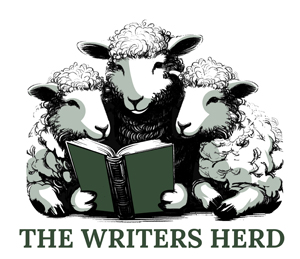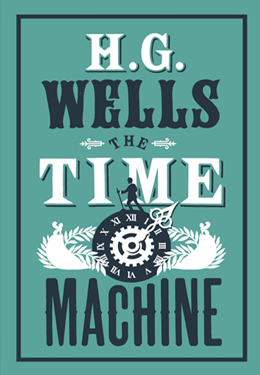“There are really four dimensions, three which we call the three planes of Space, and a fourth, Time.”
Published in 1895, H.G. Wells’ The Time Machine is known to be one of the most iconic science fiction novellas. Pioneering time travel fiction, Wells even coined the term ‘time machine’ and is considered one of the founders of modern science fiction alongside Mary Shelley and Jules Verne.
Synopsis
Set in Victorian England, The Time Machine is a framed story (where the majority of the novel is told as a tale by the nameless Time Traveller to an equally anonymous narrator) that recounts a time traveller’s journey into a post-apocalyptic future. It explores “future history” and the speculative evolution of humans into two factions – the childlike Eloi and the savage Morlocks.
Initially, the narrator dines with the Time Traveller who introduces his concept of travelling through time — after which the narrator becomes enthralled and returns to the Time Traveller’s house once more. However, his host is not there until he arrives midway through the meal declaring he has just returned from the future about which the guests are desperate to hear.
This begins the second part of the narrative in which the Time Traveller tests out his new machine and journeys to the year 802,701 AD. Upon his arrival, he meets a society of small child-like humanoids called the Eloi who live in decrepit futuristic buildings and observe a strictly fruit-based diet. Despite his best efforts, the Time Traveller is unable to communicate with them and theorises that since achieving a utopian metropolis, humanity has lost its spirit, intelligence and physical fitness that comes from necessity and struggle.
Despite the Eloi’s idyllic existence, the Time Traveller is understandably eager to go home but upon returning to where he left his machine, he finds it has vanished and has been taken by a species of ape-like cavemen known as Morlocks who live in darkness underground and feed on the Eloi at night. And it soon becomes a game of survival for the Time Traveller — whose desperation to find where the Morlocks have taken his machine only increases the longer he stays in this pitiful future.
Low and Hierarchy
“We should strive to welcome change and challenges, because they are what help us grow. Without them we grow weak like the Eloi in comfort and security.”
One of the main themes in many of Wells’ work was inequality and the social distance between the higher and lower classes. Wells was a surprisingly progressive and political writer for his time and often criticised facism, eugenics and racial prejudice. In this dystopian nightmare, the human race diverges into two remarkably different species; the illustrious and highly-favoured members of aristocracy become the Eloi and the mechanical servants who feast on their flesh have become the Morlocks. Well’s socialist views stemmed from his personal experiences of the industrial revolution and how the working class are often shunned into the dark. While it may be an extreme case, it certainly paints a similarly vivid picture today.
Does It Stand the Test of Time?
An early example of The Dying Earth subgenre of SFF, The Time Machine — unlike many other novels from this era — surprisingly still holds up. Despite some dated language regarding the Eloi’s “stunted growth”, Wells’ social commentary is remarkably forward-thinking and remains relevant today given how far the general public and the 1% have distanced themselves. It also continues to be a landmark moment in science-fiction that has inspired a vast array of time travel novels such as The Psychology of Time Travel by Kate Mascarenhas, Stephen King’s 11.22.63 and How to Live Safely in a Science Fictional Universe by Charles Yu.
Symbolism and Subtext
With the Traveller’s own time machine representing human technological innovation, symbolism is rife in Wells’ novella. Even the Sphinx — a human-animal hybrid like that of the Eloi and the Morklocks — which the Traveller sees upon arriving in the future acts as a warning of what’s to come. Contrasting to the mechanical symbolism are flowers which feature heavily, symbolising the Eloi’s well-intentioned and naive nature. A gift for the Time Traveller from the woman he saves is a pair of white flowers which he manages to bring back to his present, representing love’s ability to transcend time and language.
“And I have by me…two strange white flowers…to witness that even when mind and strength had gone, gratitude and a mutual tenderness still lived on in the heart of men.”
Final Thoughts
Considering the wide berth of time travel fiction of which I have indulged over the last few years, all harks back to H.G. Wells’ The Time Machine. Whether they are inspired by his temporal mechanics or his bleak glimpse into humanity’s future, everything returns to its source. With a fascinating story structure, a compelling plot and two unique perspectives of the Narrator’s present and the Traveller’s excursion to the future, this novella has astounded readers for over a century and ironically transcends time itself with its harrowing warning to the future of humankind. This must-read science-fiction novella has even inspired me to explore time travel in my own writing and its speculative effects on our society.
“Take it as a lie–or a prophecy…Consider I have been speculating upon the destinies of our race until I have hatched this fiction…And taking it as a story, what do you think of it?”
Have you read this book?
We would love to hear your thoughts on this book, perhaps you agree with our review, or, disagree?





